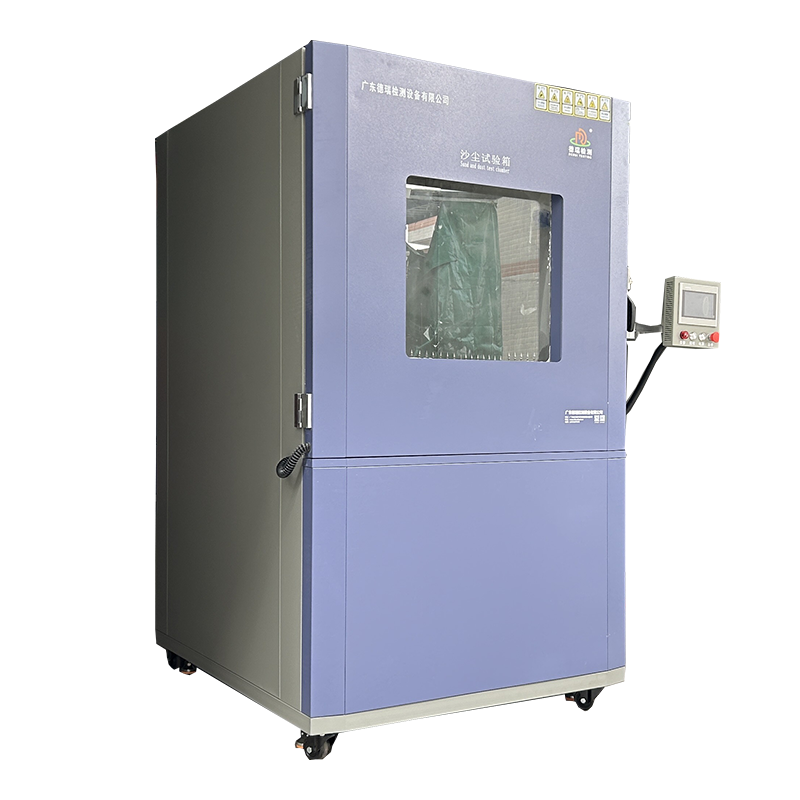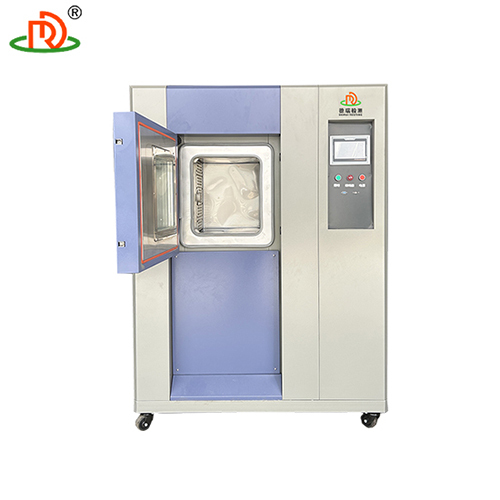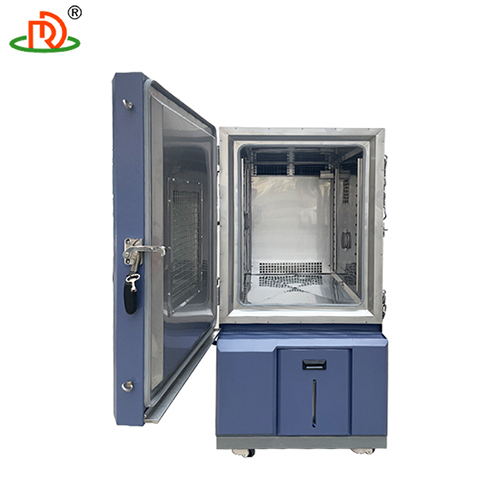Product Description
High temperature dust blowing test chamber is a kind of test equipment specially designed to simulate high temperature and sand and dust environmental conditions, mainly used to test the tolerance and protection performance of products in high temperature and dust environment. This kind of test chamber is widely used in aerospace, automotive, electronics, military and other fields to ensure the reliability and stability of equipment in extreme environments. The following are the detailed information of high temperature dust blowing test chamber:
1. Functions and Uses
- Simulate high temperature environment: capable of providing a high temperature environment, usually ranging from room temperature to +200.
- Simulated sand and dust environment: Through the fan and sand and dust generating device, it simulates the environmental conditions such as wind sand and dust.
- Composite test: Composite test of high temperature and sand and dust at the same time to evaluate the performance of the product under extreme environment.
2. Main Technical Parameters
- Temperature range: usually between room temperature and +200, which can be adjusted as needed.
- Temperature fluctuation: usually controlled within 1 or 2.
- Wind speed range: usually between 0.5m/s and 10m/s, adjustable as needed.
- Sand Dust Concentration: Usually between 2g/m and 4g/m, adjustable according to the test standard.
- Testing time: Programmable control up to several hundred hours.
- Sand dust type: Talcum powder, silica sand etc. are usually used as the sand dust source.
- Internal size: Depending on the model, the size ranges from several hundred liters to several cubic meters.
3. Test standards and methods
- IEC 60529: International Electrotechnical Commission's test standard on enclosure protection level, which specifies the dustproof test methods for IP5X and IP6X.
- GB/T 2423.37: Chinese national standard, which specifies the method of sand and dust test in the environmental test of electrical and electronic products.
- MIL-STD-810G: U.S. military standard that specifies environmental engineering considerations and laboratory test methods, including sand and dust testing.
- ISO 16750-3: International Organization for Standardization (ISO) standard for environmental conditions and tests for electrical and electronic equipment for road vehicles.
4. Test Procedure
1.
Initial testing: under standard environmental conditions, test samples are initially tested for appearance, basic functions, and electrical properties.
2.
Sample placement: place the sample in the test chamber to ensure that the sample is in normal working condition.
3.
Setting parameters: according to the test standards or customer requirements, set the temperature, wind speed, sand and dust concentration, test time and other parameters.
4.
Start test: start the test chamber and begin the compound test of high temperature and sand dust.
5.
Continuous monitoring: During the testing process, monitor the performance and status of the sample regularly and record the relevant data.
6.
End of test: After the test, take out the sample, carry out appearance and function check and evaluate the test result.
5. Assessment Criteria
- Appearance inspection: Check whether there is any sand and dust deposition on the surface of the sample and whether there is any sand and dust entry in the sealing part.
- Functional test: Test whether the functions of the samples are normal and whether they are affected by high temperature and sand and dust.
- Electrical performance: Test whether the electrical performance of the sample is affected, such as insulation resistance, contact resistance, etc.
- Physical properties: Evaluate the physical changes of the samples under high temperature and sand and dust environment, such as aging and deformation of materials.
6. Application areas
- Aerospace: Test the performance of aerospace equipment in high temperature and sand and dust environments, such as sensors, navigation equipment, etc.
- Automotive industry: Test the resistance of automotive parts in high temperature and sand and dust environment, such as lights, instrument panel, engine parts, etc.
- Electronic and electrical appliances: test the reliability of electronic products under high temperature and sand and dust environment, such as cell phones, computers, household appliances, etc.
- Military field: test the performance of military products under extreme environment, such as weapons and equipment, communication equipment, etc.
7. Precautions
- Safe operation: Operators should wear protective equipment, such as high-temperature gloves, protective glasses, etc.
- Equipment Maintenance: Regularly check and maintain the equipment to ensure its normal operation, especially the fan and sand dust generating device.
- Sand dust recovery: sand dust should be recovered in time after use to avoid environmental pollution.
- Temperature control: Ensure the temperature uniformity inside the test chamber to avoid localized overheating or overcooling.
- Environmental control: Keep the test environment clean to avoid external sand and dust affecting the test results.
| Item | Specification |
| Internal dimension | 800W*800D*800Hmm |
| External dimension | 1300W*1000D*1700Hmm |
| Test sample | Size W20cm- L30cm-D15cm, weight 0.5kg |
| Chamber material | SUS304 Stainless steel |
| Specifications of square mesh sieve | Mesh hole 75um, mesh metal wire diameter 50um |
| Talcum powder amount | 2kg/ m |
| Airflow speed | No more than 2m/s |
| Door | Left open door with tempered glass door |
| Controller | PLC Touch Screen controller, programmable to set as below cycle: a. Blowing dust time (Stop/Blow) m/s b. Cycle time: can be adjusted c. Pre-set test time: 0s ~99m99s |
| Vacuum system | Pressure gauge, air filter, Pressure regulating FRL, connecting pipe, Vacuum pump |
| Vacuum pump capacity | 60-600 L/H |
| Fan | Centrifugal fan |
| Safety protection devices | Meter over-temperature function, Phase shortage protection, Power short-circuit protection |










 English
English Spanish
Spanish French
French German
German Italian
Italian Chinese (Simplified)
Chinese (Simplified) Japanese
Japanese Korean
Korean Arabic
Arabic Portuguese
Portuguese